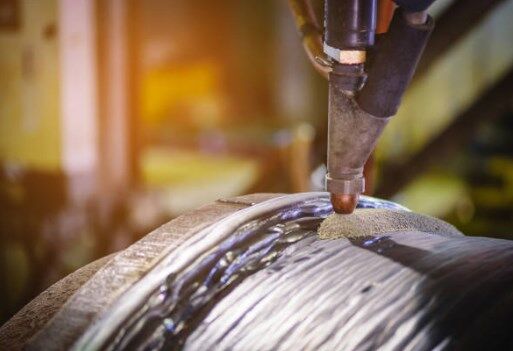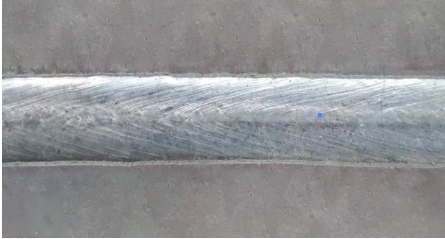Submerged Arc Welding (SAW) is a highly efficient process for joining thick sections of metal, widely used in industries like shipbuilding, heavy fabrication, and pipeline construction. However, like any welding method, it's susceptible to defects, and one of the most common and troublesome is blow holes. These small, often spherical voids within the weld metal can significantly compromise the structural integrity and performance of the weld.
Understanding the root causes of blow holes is the first step towards preventing them. Let's delve into what leads to these unwelcome imperfections and explore effective solutions.

I. What are Blow Holes in Submerged Arc Welding (SAW)?
Blow holes, also known as gas porosity, are cavities formed in the weld metal when gases become trapped during solidification. These gases are typically dissolved in the molten weld pool but fail to escape to the surface before the metal cools and hardens.
II. Causes of Blow Holes Defect in Submerged Arc Welding
Several factors contribute to the formation of blow holes during submerged arc welding. Understanding these factors is crucial for implementing effective preventive measures:
1. Contamination: This is arguably the most frequent culprit.
Moisture: Wet flux is a major source of hydrogen, which is highly soluble in molten steel. As the weld cools, the hydrogen attempts to escape, forming blow holes.
Oil, Grease, and Rust: These organic contaminants decompose at welding temperatures, releasing gases that get trapped in the weld pool.
Paint and Coatings: Similar to oil and grease, various coatings on the base metal can vaporize and introduce gases.
Dirt and Debris: Any foreign material on the joint surface can contribute to gas formation.
2. Improper Flux Selection or Condition:
Incorrect Flux Type: Using a flux that is not suitable for the specific base material and welding parameters can lead to poor shielding and gas entrapment.
Degraded Flux: Flux that has been exposed to humidity or has absorbed moisture will contribute to hydrogen pickup in the weld.
Insufficient Flux Coverage: Inadequate flux depth or coverage can expose the molten pool to the atmosphere, allowing nitrogen and oxygen to be absorbed.
3. Incorrect Welding Parameters:
High Welding Speed: A fast travel speed reduces the time the molten pool stays liquid, giving less opportunity for gases to escape.
Excessive Arc Voltage: Higher voltage increases the heat input and can lead to a wider, shallower weld pool, making it harder for gases to rise.
Insufficient Welding Current: Low current can result in a smaller, less fluid weld pool, hindering gas escape.
Incorrect Wire Feed Speed: An improperly set wire feed speed can affect the arc stability and molten pool dynamics.
4. Base Metal Composition:
5. Poor Joint Preparation:
III. Effective Solutions to Prevent Blow Holes in SAW
Preventing blow holes requires a proactive approach, addressing the potential causes before welding begins:
1) Thorough Cleaning:
Ensure base materials are completely free of moisture, oil, grease, rust, paint, and any other contaminants.
Use appropriate cleaning methods like grinding, wire brushing, or chemical cleaning.
Store flux in a dry environment and consider rebaking it if there is any doubt about its condition.
2) Correct Flux Management:
Select the flux type recommended for the specific application and base metal.
Follow the manufacturer's guidelines for flux storage and handling.
Ensure sufficient flux depth and coverage during welding.
3) Optimize Welding Parameters:
Follow recommended welding procedures and parameters for the material thickness and joint type.
Adjust welding speed, voltage, and current to achieve proper penetration and a sufficiently fluid weld pool.
Experiment with parameters on test pieces before welding critical components.
4) Consider Base Metal Quality:
Use base materials with low levels of elements known to cause porosity.
Ensure the base metal is dry and at an appropriate temperature, especially in cold weather.
5) Proper Joint Design and Preparation:
Design joints that allow for good penetration and molten metal flow.
Ensure accurate fit-up and clean, smooth joint surfaces.
IV. How Megmeet SA1000/SA1250 Series SAW Machines Can Help Minimize Blow Holes
While no welding machine can magically eliminate blow holes, the design and features of the Megmeet SA1000/SA1250 Series Submerged Arc Welding Machines provide significant advantages that contribute to minimizing this defect:
.png)

CC/CV welding modes and excellent welding performance: This is a key feature. The precise control over voltage and current in both Constant Current (CC) and Constant Voltage (CV) modes allows for meticulous optimization of the welding arc. This leads to a more stable arc, a consistently sized and fluid molten pool, and controlled solidification – all factors that promote the escape of dissolved gases.
Input voltage allows a wide fluctuation range (-15%~+25%): Voltage fluctuations can lead to unstable arc behavior, which can introduce turbulence and trap gases. The Megmeet's ability to handle a wide input voltage range ensures a more stable and consistent power supply to the arc, even in challenging electrical environments.
Duty cycle is 100%, which can ensure high current welding for a long time: Maintaining a stable arc for extended periods at high currents helps degas the weld pool more effectively. The 100% duty cycle ensures the machine can handle demanding, continuous welding operations without performance degradation that could lead to unstable arc conditions.
Meet with long-distance welding and can weld stably when the cable is extended by 100 meters: Voltage drop over long welding cables can impact arc stability and welding parameters. The Megmeet's ability to maintain stable welding over extended cable lengths ensures consistent power delivery to the arc, crucial for preventing erratic behavior that could lead to gas entrapment.
Conclusion
Blow holes are a common challenge in Submerged Arc Welding, primarily caused by trapped gases. By understanding the sources of these gases and implementing rigorous preventative measures related to cleanliness, material handling, and parameter control, fabricators can significantly reduce their occurrence.
The Megmeet SA1000/SA1250 Series, with its advanced features like precise parameter control, voltage fluctuation tolerance, high duty cycle, and stable long-distance welding capability, provides a powerful and reliable tool to support these efforts. When combined with best practices in welding, these machines help unlock the full potential of SAW, leading to stronger, more reliable, and defect-free welds.
Want to learn more about optimizing your SAW process or the capabilities of the Megmeet SA1000/SA1250 Series? Contact us today!
Related articles:
1. How to Identify the 7 Most Dangerous Welding Defects?
2. Tips for Troubleshooting Common MIG Weld Defects
3. Undercut Welding Defect: Causes, Prevention, and Repair
4. Welding Defects and Remedies in Steel Material
5. Welding Defects, Problems And Easy Solutions [2023]




.png)

